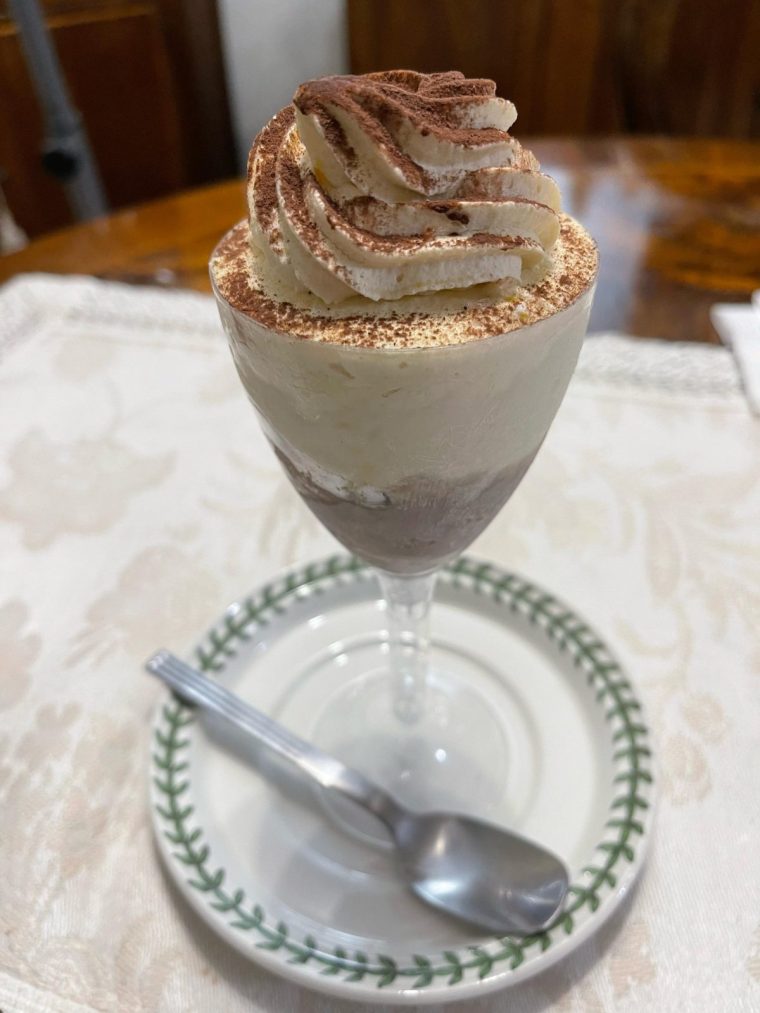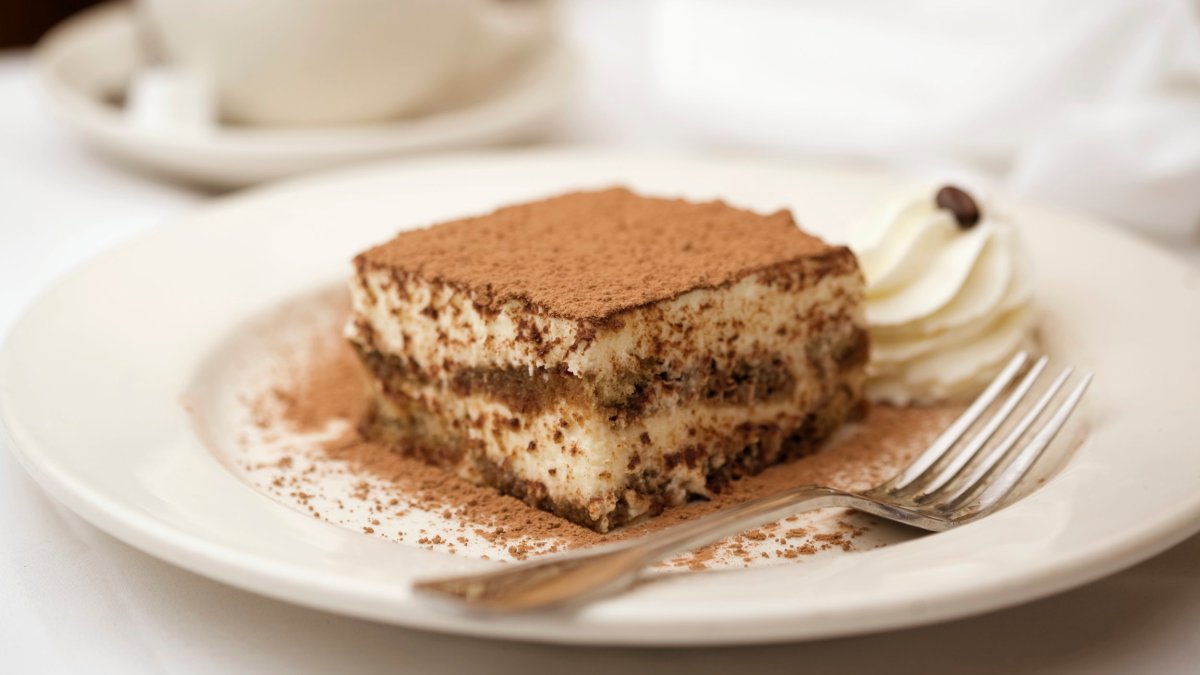A dispute is raging between the neighbouring regions of Veneto and Friuli in northern Italy over who invented tiramisu and how it should be made and served
Tiramisu is adored worldwide.
But while Italian folklore holds that the dessert began as a granny’s simple treat of fresh egg yolk mixed with sugar to reinvigorate weak kids and women in labour, a heated dispute continues over its exact origins and recipe.
The neighbouring northern regions of Veneto and Friuli both claim to be its birthplace.
Flavia Cosolo, a 70-year-old from Pieris, a tiny village in the Friuli region, claims that her pastry chef father, Mario Cosolo, was the first to come up with a cake called tirime su in the 40s, serving it in Pieris’s renowned Al Vetturino tavern, run by the Cosolo family.
But a rival version of the dessert’s history goes back much further.
Tiramisu ‘first made in brothels’
“Tiramisu was a natural Viagra,” says Anna Maria Pellegrino, a member of Italian cultural association the Academy of Tiramisu. “In Treviso [a town in Veneto], it was first made inside brothels in the 1800s to refuel clients and keep the sex and money flowing.
“The name literally means ‘lift me up’, ‘gimme a shake’. Then, when brothels were shut by Italy’s government in 1958, the dessert was adopted and improved by Le Beccherie restaurant.”
And, indeed, the prestigious Italian Academy of Cuisine states that the first recipe with the name of “tiramisu” was registered in 1970 by Le Beccherie, in Treviso.
Ms Pellegrino argues that Treviso played a key role in spreading worldwide the tiramisu we eat today, with layers of coffee, ladyfingers, egg yolk, sugar and mascarpone cheese cream sprinkled with cocoa powder. In Treviso, it is eaten cut in slices and served on a plate, like lasagne.
An alcoholic alternative
But in Friuli, Flavia Cosolo’s father’s recipe is different: it is alcoholic due to the addition of sweet marsala wine. There is no coffee, but fresh whipped cream mixed with chocolate mousse, sponge cake instead of ladyfingers, and it is served in an elegant cocktail stem glass.
Mario Cosolo had a knack for inventing cakes in the kitchen-lab of his family’s tavern, says Flavia, and came up with tirime su in 1935 when, as a teenager he embarked on a royal ship sailing to Somalia as a cook.
Thanks to the battle Flavia has been waging for more than a decade, her father’s creation was added to the Friuli region’s legal list of territorial, protected products in 2007. But what she deems as being the real origin story hasn’t got much further beyond her own region, and that has left her frustrated.
 Flavia Cosolo, a 70-claims her pastry chef father, Mario Cosolo, was the first to come up with Italy’s world famous tiramisu
Flavia Cosolo, a 70-claims her pastry chef father, Mario Cosolo, was the first to come up with Italy’s world famous tiramisu
“That’s not enough,” she says. “Treviso keeps basking in the glory and global fame of tiramisu, and it drives me mad. I spent so much of my own money to promote my dad’s first recipe, and I want the world to know his story.”
Dessert made for a king
Italy’s then-king, Victor Emmanuel III, was on board the ship on which Mario worked as an 18-year-old, recounts Flavia.
One day the head chef held a contest among the fleet’s cooks to see who could made the best dessert in the shortest time to serve to the king. That is when Mario improvised and created the delicious dessert. The monarch loved it, so once he was back home, Mario included the dessert in his tavern’s menu, initially with the name of “Coppa Vetturino”.
“In 1945, daddy changed the name of the dessert into ‘tirime su’, in local Friuli dialect, after a client had a weird reaction to it,” Flavia says. “While he was savouring the cake, he eyed in a sexy way the pretty waitress, and told my dad the dessert ‘literally lifted me up’, making him feel sexually aroused.
“This client suggested my dad add the new name to the menu. That’s how it came about that my dad was the first to name the dessert tirime su.”
 Tirime su as served in Friuli with fresh whipped cream mixed with chocolate mousse and sponge cake served in a stem glass.
Tirime su as served in Friuli with fresh whipped cream mixed with chocolate mousse and sponge cake served in a stem glass.
She is still saddened by the next part of her story. A friend of her father who had a mountain restaurant in nearby Tolmezzo “stole the recipe and name in 1959”, adding mascarpone and replacing sponge cake with ladyfingers.
“This twisted version spread to Veneto in the 60s, after a Veneto-based chef from the Tolmezzo inn brought back home to Veneto my dad’s tirime su,” says Flavia.
Recipe lay forgotten in a drawer
When her father died in 1986 after a long illness, his original recipe had been forgotten in a drawer and Veneto had already exported its variant to the rest of the world.
Flavia, who lives in Trieste, has travelled far and wide to promote her father’s tirime su legacy.
“I’ve taken it as far as the US and Canada, preparing hundreds of tirime su. That’s my calling,” she says. “I’ve dedicated my life to recreating the original Coppa Vetturino for the past 60 years.”
She blames Friuli politicians for being “blind” and “hopeless” in defending and bringing forth her father’s achievements.
As there are no restaurants in Friuli – or anywhere else in Italy –serving the former Coppa Vetturino any more, she prepares dozens each week and stacks them in her freezer for guests, family and friends.
“I’m more than happy to welcome anyone who wishes to taste history’s first, real tirime su at my house.”
And she is proud that tourists in the village of Pieris can today visit a museum launched to honour the memory and legacy of her father.
